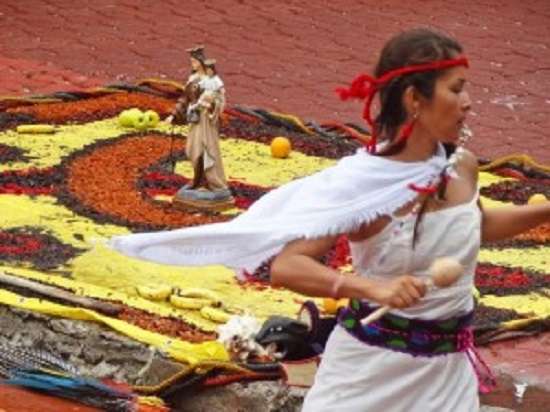No one can blithely justify the Spanish conquest of the Americas or present it as a seamless transition. Conversely, no one can honestly claim it was all rainbows and unicorns in the Americas before the Spaniards took over. Much of what we pleasantly experience in today’s San Miguel de Allende is a mixture of the indigenous culture blending into the Spaniards’.

Nowhere is the cultural blend more obvious and omnipresent than in religion.
Religion can be personal or shared. It can be based on reconciliation of the unmanageable forces of nature and sicknesses, or simply an attempt to control the uncontrollable, mark time and enrich each part of life. Religion can also be an institution that is as all pervasive as today’s media.

San Miguel de Allende hosted a convergence of the Spaniard’s institutional church and indigenous spiritual practices. Rather quickly, in fact, as the Church and State were essentially one here from day one.

Like with the indigenous, Spain’s rulers combined religion and politics by heading up both. King Ferdinand and Queen Isabel were intensely religious themselves and used their regal offices to pressure the pope into granting the right of ecclesiastical control over their newly created colonies. Spain’s royalty sent priests and friars to Mexico to evangelize its people. Plainly put, Queen Isabel declared America’s natives were her subjects and, as such, they were to be taught to read, write and be good Catholics.


Franciscans, especially, believed that indigenous were a God-given gift, a means for the Church to save itself through their conversion. At the time millions left the faith in Europe to join Lutheranism and King Henry VIII’s new Anglican church. Meanwhile, the Americas offered millions more converts to be gained via a bit of invasion, occupation and Inquisition Era tactics.
Making the best of a bad situation, the indigenous took what suited them about the new faith fashioning altars, celebrating favorite saints and becoming accomplished spiritual-themed musicians and painters. All the while participating in fiestas and processions San Miguel de Allende is still justly famous for.

In addition, the indigenous appreciated the circular nature of the liturgical calendar and spectacle nature of the mass, similar to their existing practices.

Plus it was priests and nuns who were the teachers and administrators for town’s schools, hospitals and orphanages many still benefit from.
By Joseph Toone
- TripAdvisor’s top tour guide with History and Culture Walking Tours and Joseph Toone Tours.
- Amazon’s best selling author of the San Miguel de Allende Secrets books.
- Creator of the National Geographic-sponsored Maria Dolls coloring book helping indigenous doll makers.
- Producer of San Miguel de Allende Secrets YouTube channel with over 100 videos and 1,500 views monthly.
- International speaker on the Power of the Feminine in San Miguel de Allende.

